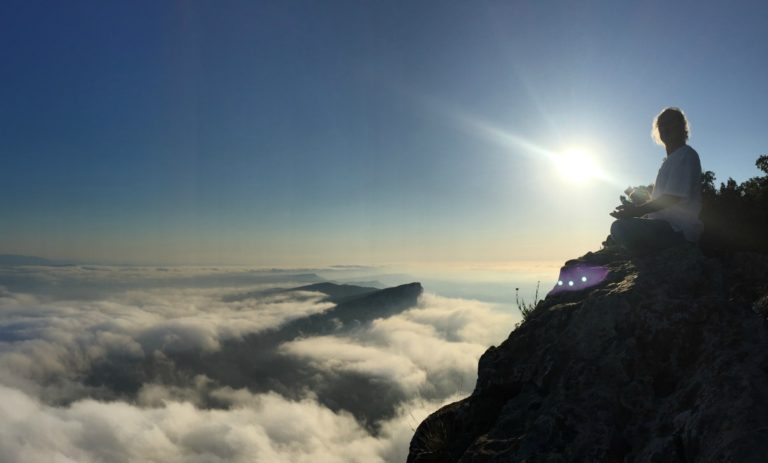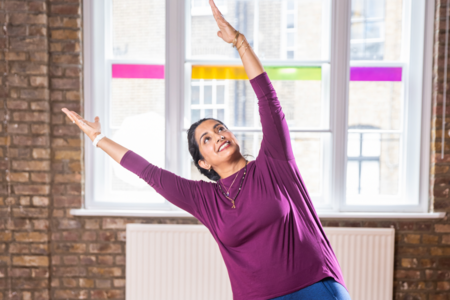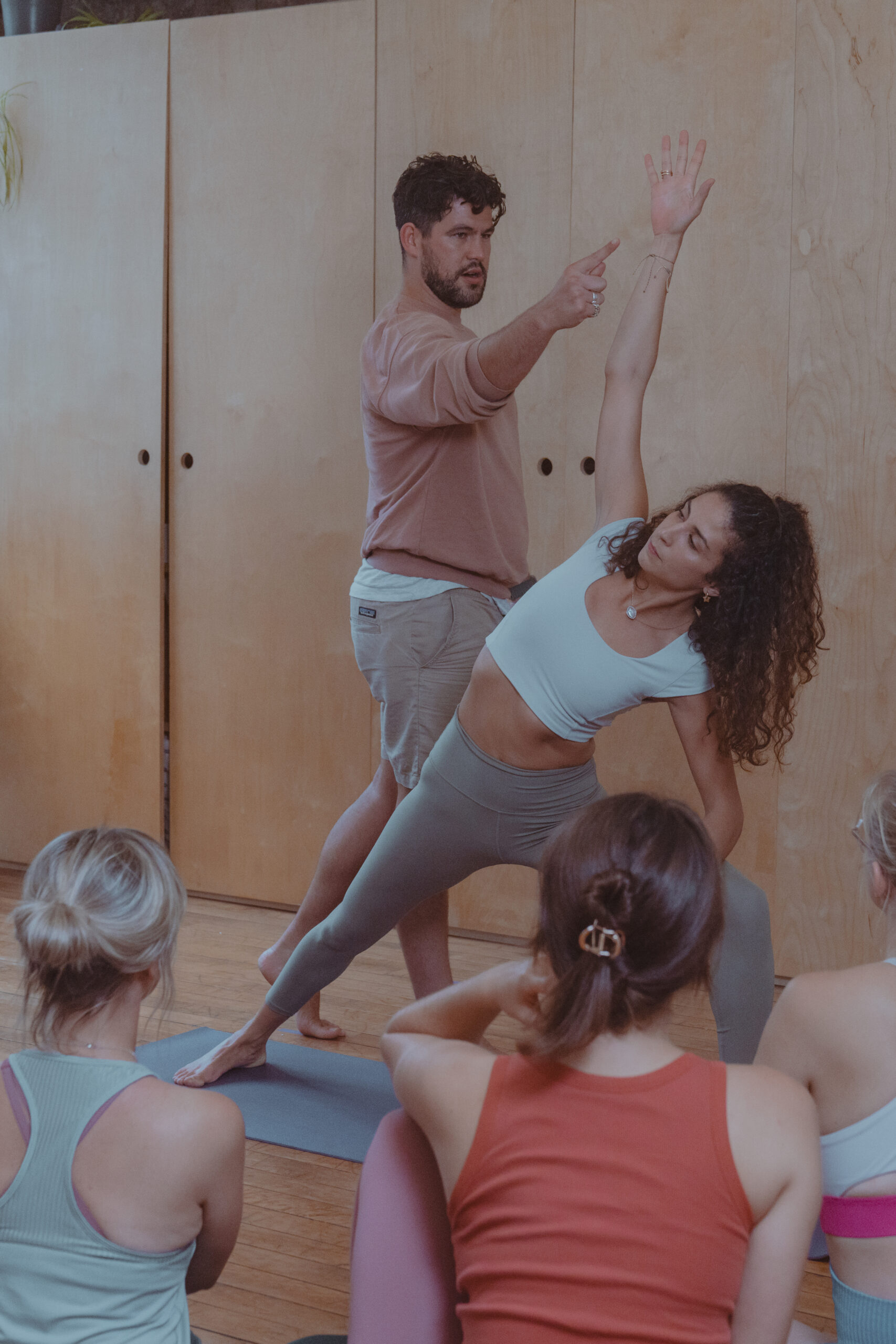“Posture itself may appear as a kind of somatic koan. In a sitting or standing position surrender the entire weight of the body to gravity, and yet remain as tall as you possibly can be.”
—Will Johnson
Renowned yoga teacher Francois Raoult joins us 13 February for an in-depth workshop on what he calls the “vertical axis” – the harmonious vertical posture in standing and movement which can teach us how to practise not just yoga poses from inversions to savasana, but also how to be and act in the world. Francois has explored posture and its relationship to all yoga poses – not just standings – from a variety of angles including anthropology, evolutionary biology and comparative anatomy. Ahead of his workshop, we asked this ever-curious yogi a few questions about his colourful life journey thus far. We touch on everything from listening to music with your whole body to the need for cosmic rebellion against the dreaded tech neck. Read on and enjoy a glimpse into this refreshingly quirky mind.
Hello Francois! We’re delighted to welcome you back to triyoga. Can you please tell us a little bit more about yourself and what students can expect from a workshop with you?
Well, when I was 19 I went East towards India, hitchhiking and walking with no money in my pocket. I was called to explore Indian sacred architecture, music and culture – and yoga was part of it. Then, on my way back from India, I registered for yoga classes in the middle of Normandy. I started teaching a few years later when my teacher left to start a goat farm in the South of France. I have been to India regularly since then, by myself or leading groups to have a deeper experience without fear.
I studied architecture, musicology and philosophy which ended up also being facets of yoga, the architecture of an asana, the music of the breath and the practical philosophy of daily life. This is reflected in my workshop, not always in an obvious way but it is there – opening new windows to see, to go back to our true nature as human beings and as animals. Jung used to say: “Too much animality creates bestiality but too much culture makes a sick animal…” We have to find the balance between culture and nature. Deep ecology is part of it and yoga practice assists us in that process. I teach basic asana with meaning, multilayered. Nothing acrobatic or high speed. Common sense oriented which is often missing. I adapt the asana to the needs of everyone.
Your workshop focuses on tadasana and how this informs so many other poses. Can you tell us a little more about this from your viewpoint? And how perhaps we have lost our ability to stand correctly, especially with the advent of iPhones and tech neck.
This is my field of expertise. Looking at standing in all cultures and different parts of history, when and why did we lose the vertical axis and became more depressed. Looking at Giacometti sculptures, the drama, the existential angst… and looking at farmers in rural India with stunning tadasana just by instinct. This is also why BKS Iyengar caught my attention in the 1970s. He taught tadasana like no one, maybe it became too military or staged but most of it is very sound and intelligent. And we need it – perhaps standing on two feet is still a work in progress for human beings! So, there are ways to reclaim our birth rights of standing and sitting following cosmic rules… sometimes indirectly after specific asana or by following a set of instruction, but also by feeling them not just imposing them to the body. A harmonious vertical position, when we’re standing or walking, has what I call “aplomb”- a vertical plumbline from the outer ankle bone up to the inner ear. We can feel energy vectors connecting our feet with our lower limbs, lumbar spine, pelvic floor and internal organs, up through our ribcage and beyond. Tadasana is the first pose in “Light on Yoga” and savasana is the last, and they are the two main challenges of the modern-era Western world – functional standing posture and deep relaxation. How they mutually influence each other can be seen as part of the yogic quest.
How do you feel modern day living (i.e. sedentary desk work) is affecting our bodies and how perhaps should the yoga practice be adapted to combat this?
One of my first teachers Noelle Perez in Paris was also an anthropologist so we looked at cultures which carry on the head and became much less ethnocentric. Studying and observing the wonderful postures of Africa, India, South America and also from our ancestors and little children – how people carry babies, how they bend forward, how they squat… This is omnipresent in my teaching of standing poses, inversions, etc. – a bigger picture. And, practising a sequence of asana as an antidote to TMSD (too much sitting disease!).
You have studied with some of the world’s most renowned teachers – BKS Iyengar, Thich Nhat Hanh, Thomas Myers. How have they each informed your teaching?
They nourish my teaching. I had to digest, assimilate, then forget! Each one has a piece of the puzzle. Also, Emily Conrad (continuum) and Bonnie Bainbridge (body mind centering) have tremendously influenced the world of modern dance and later yoga. I have also studied ayurveda with Dr Robert Svoboda who is an underestimated genius. I see everything with ayurvedic lenses.
Are you of the mindset that it’s important to have a number of teachers, or to find one and to stick with them?
We don’t decide. Life and karma provide. I had no idea I would end up teaching yoga. In fact, all my friends in the beginning were making fun of me when I started. I believe in upagurus (the “teacher nearby”). They can be human teachers, but also events, books, meetings, nature encounters, places which influence the teachings and the practice and makes us evolve. Of course, to get somewhere you have to shop around first, be curious and then stay at least a decade with a teacher. Think if you were learning the cello for example, 10 years is not much. So, the 200-hour training with eclectic faculty for example (and I also offer some in the US and Europe) are just a blink but they act as diving boards to dive deeper.
You’ve done a masters in ethnomusicology – can you tell us a little bit about this?
My Masters is in ritual Tibetan music, but I also passed a year studying The Magic Flute, an opera by Wolfgang Amadeus Mozart that includes both singing and spoken word. I think Mozart is quite special. I travelled to the kingdom of Zanskar near Tibet to record music in monasteries… and looked at the function of music in society. It is omnipresent still today.
And how is this then incorporated into your yoga practice and teachings?
We need music. We are all musicians, but some people are too self-conscious or did not have a chance to be exposed to it. So, we chant simple mantra with a lot of presence and energy and we listen to all kinds of music in a yogic way, with the whole body not just with the ears.
From Mozart to Keith Jarret, from the pygmies polyphony to the gregorian chant melody, from Pandit Jasraj to Donovan’s sutra! …and it brings a lot of joy and emotion. A deep release. I am also very interested by composers influenced by Indian music like Philip Glass or Christian mystics like Arvo Part.
Can you tell us a little more about how different sound frequencies affect us in different ways?
Well it depends. Sometimes it gets too new age-y or pseudo-scientific, so we have to be careful with specific numbers like 136.1 or 432 Hz – even though there are something special about them. Everybody’s trying to sell a certain frequency or tuning fork with special healing virtues. I think intervals like the fifth, harmony and melody matter more than just frequency. So, no short cuts between chakras and notes of a scale, for example. They are very subjective as the tuning fork has changed a lot over the centuries and is different in different cultures or does not exist. So what is a C? What kind of C are we talking about? There are a lot of them, but yes everything is vibration. Life is vibrating and resonating in us and through us. We are emitter-receptors. Pranayama and chanting help us to realise it – as music is audible breath … everything is vibration. Life is vibrating and resonating in us and through us. We are emitter-receptors. Pranayama and chanting help us to realise it – as music is audible breath…
Can you explain the differences between practising savasana in silence and with music? If playing music is there a specific type or frequency you should be looking for?
Savasana is in silence ultimately. But to facilitate its access we can guide like a spoken meditation with a script or an awakened dream or we can use music not to distract but to go deeper inside, to let go. Sometimes we need to cry or scream to be truly silent afterwards (like John Lennon did with Mother). It is not the frequency per se again which matters but being moved by the music, an inner pranic shower… so as long as we call it naada yoga and not savasana, there is no problem. We can use sound in any way or form, it is part of yoga. But yes, silence rules the kingdom of savasana. Then deep layers of ourselves are revealed. Perception is enhanced which is one of my focuses in teaching: we will open the doors of perception and let students explore.
Francois Raoult is dedicated to teaching yoga with awareness, integrity, humour and compassion. He is the founder and director of Open Sky Yoga in Rochester, New York and has taught yoga since 1975. He conducts seminars, international retreats and teacher trainings worldwide. A graduate of Ecole Nationale de Yoga in Paris and among the first French yoga instructors to study in Pune, India with B.K.S. Iyengar, Francois also has explored meditation, Ayurveda and experiential anatomy. Certified in Gong and Laughing yoga, Francois completed the international sound healer programme in Spain and also holds a Master’s degree in Ethnomusicology.










